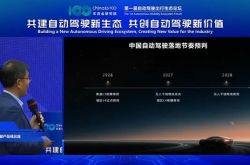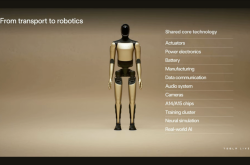Chengdu-Based Commercial Aerospace Company Eyes IPO Valued at RMB 6.5 Billion
![]() 02/27 2025
02/27 2025
![]() 597
597
This article is compiled from publicly available information and is solely intended for information exchange purposes. It should not be construed as investment advice.
Produced by | IPO Team, Company Research Room
Chengdu Guoxing Aerospace Technology Co., Ltd. has recently submitted an IPO application to the main board of the Hong Kong Stock Exchange, potentially becoming the exchange's first commercial aerospace stock.
Founded in 2018, Guoxing Aerospace ranks eighth among private Chinese commercial aerospace enterprises in satellite-related businesses, with a 2023 revenue market share of 1.9%.
Currently, the domestic commercial aerospace industry is in its nascent stages, presenting significant challenges for private enterprises like Guoxing Aerospace in market expansion and customer service. During the reporting period, the company grappled with issues such as fluctuating customer bases and revenue dependency on a handful of key clients.
Domestic Commercial Aerospace: An Emerging Sector
Compared to the United States, China's commercial aerospace industry is relatively nascent.
In 2014, China began encouraging private capital to participate in commercial aerospace activities. 2015 is widely considered the inaugural year of private commercial aerospace in China, marked by the issuance of the "National Medium and Long-term Development Plan for Civil Space Infrastructure (2015-2025)," which explicitly encouraged private enterprises to delve into commercial aerospace. In 2016, the launch of Lishui-1 aboard the Long March 11 rocket signified the first time a Chinese rocket provided commercial launch services to a private enterprise.
Since then, numerous commercial aerospace enterprises have emerged in China.
The commercial aerospace industry chain encompasses upstream activities such as rocket and satellite manufacturing and related supporting equipment; midstream activities include satellite launches, ground equipment manufacturing, and satellite operations; while downstream activities consist of terminal applications and service markets. Traditional applications span communications, navigation, and remote sensing, while emerging applications encompass satellite internet, space tourism, space mining, and deep space exploration.
According to the China Aerospace Industry Quality Association, the commercial aerospace market has witnessed consistent growth, with the market size expanding from RMB 0.6 trillion in 2018 to RMB 1.9 trillion in 2023, averaging an annual growth rate of 23%.
Xinniu Data Platform statistics reveal that from 2016 to 2024, the number of investment events in the commercial aerospace sector was 13, 19, 23, 19, 18, 11, 17, 10, and 15, respectively.
A Comprehensive Commercial Aerospace Player
Established in 2018, Guoxing Aerospace is a commercial aerospace company with a comprehensive business chain encompassing "satellite building, management, and utilization."
Lu Chuan, the 41-year-old founder and chairman of Guoxing Aerospace, is a senior engineer and a recipient of the special support plan for national high-level talents.
Prior to its IPO, Guoxing Aerospace secured over RMB 1 billion in financing, valuing the company at RMB 6.5 billion. In 2020, Hongtai Fund and Xinghe Group led the company's A+ round; in 2021, Hengjian Investment led the company's RMB 355 million B round; and in August 2023, the company completed a RMB 500 million C round led by Hongtai Fund.
Guoxing Aerospace's business primarily consists of two segments: satellite and related services, encompassing the development and sale of customized satellites, as well as related satellite operation and management, which cover the upstream and midstream of the commercial aerospace industry; and satellite-based solutions, which utilize satellite remote sensing data and AI algorithms to offer tailored application solutions, such as high-precision 3D digital modeling of real cities, primarily used in cultural tourism, gaming, and urban governance, among others, covering the downstream of the commercial aerospace industry chain.
In 2018 and 2024, Guoxing Aerospace launched its first AI application satellite and first AI intelligent computing satellite, respectively.
In terms of revenue structure, Guoxing Aerospace primarily derives its revenue from satellite-based solutions, serving downstream customers. In 2022, 2023, and the first nine months of 2024, Guoxing Aerospace's revenue was RMB 177 million, RMB 508 million, and RMB 237 million, respectively, exhibiting an overall growth trend. During these periods, the revenue contribution from satellite-based solutions was 58%, 90.7%, and 81.5%, respectively, while that from satellite and related services was 29.5%, 0.6%, and 11.5%, respectively.
Key Client Instability
Currently, China's commercial aerospace industry is still in its early stages, characterized by insufficient market maturity and considerable demand uncertainty. Private commercial aerospace enterprises face notable challenges in market expansion and customer service, making it challenging to establish stable revenue streams.
According to the prospectus, in 2022, 2023, and the first three quarters of 2024, the top five customers of Guoxing Aerospace contributed 73.9%, 56.1%, and 92.7% of the company's revenue, respectively. Among them, the largest customer contributed 49.2%, 21.5%, and 73% of revenue, respectively, indicating a high degree of dependency on key clients.
Furthermore, with a highly concentrated customer base, Guoxing Aerospace experiences significant changes in its key clients, with the top five clients varying each year. Downstream clients encompass electronic product and software development companies, digital cultural and creative companies, as well as enterprises in the energy, real estate, and construction sectors.
From 2022 to the first three quarters of 2024, a total of 14 companies featured among Guoxing Aerospace's top five clients. Notably, in 2024, none of the top five clients overlapped with those from 2022 and 2023, underscoring Guoxing Aerospace's challenge in maintaining a stable client base and the need to secure new clients annually.
Regarding this, Guoxing Aerospace explained that due to the unique nature of the satellite industry, procurement and delivery cycles are typically prolonged and influenced by various factors such as the degree of satellite customization, customers' technical requirements, and the availability of rocket launch windows. These factors are often beyond their control, leading to limited repeat procurement during the past record period and an inability to guarantee future client base expansion or procurement volume.
In terms of cash flow, from the end of 2022 to the end of the third quarter of 2024, Guoxing Aerospace's operating cash flow remained negative. Additionally, the company's trade receivables and notes receivable amounted to RMB 129 million, RMB 501 million, and RMB 500 million, respectively, during this period. The revenue collection turnover days were 173.1 days, 233.8 days, and 598.6 days, respectively, indicating a lengthening of turnover days and overall, not a high quality of revenue.
In 2022, 2023, and the first three quarters of 2024, Guoxing Aerospace incurred losses of approximately RMB 90.907 million, RMB 139 million, and RMB 214 million, respectively. During the reporting period, Guoxing Aerospace accumulated losses totaling RMB 440 million.






